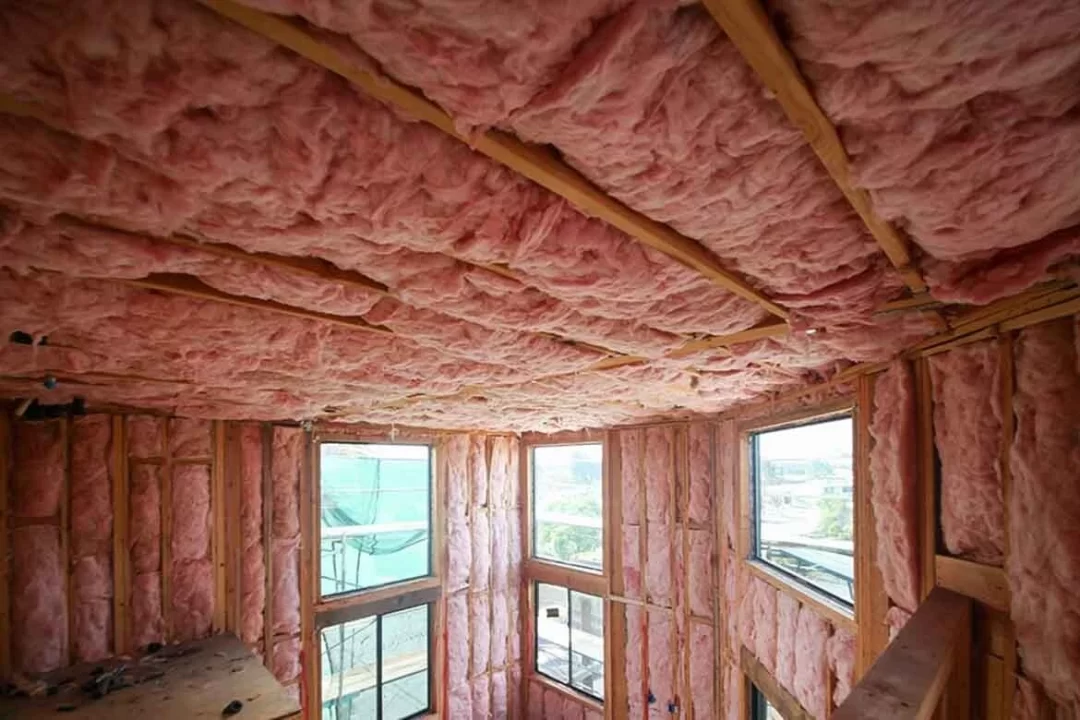6 Home Insulation Types All Homeowners Should Know
Discover the different home insulation types and learn how to make your home more comfortable and energy-efficient. This comprehensive guide covers various insulation options, their benefits, and expert tips to improve your living space.

Home Insulation Type: Understanding the Basics
Home insulation plays a vital role in maintaining indoor temperature, ensuring your living space remains cozy during winter and cool during summer.
It prevents heat transfer, reducing your reliance on heating and cooling systems, ultimately leading to cost savings and a reduced carbon footprint.
Types of Home Insulation
Here are six types of home insulation you can explore:
1. Fiberglass Insulation
Fiberglass insulation is one of the most common and cost-effective types available.
Composed of fine glass fibers, it can be installed as batts, rolls, or loose-fill. Fiberglass insulation is known for its fire-resistant properties and excellent thermal performance.
2. Cellulose Insulation
Made from recycled paper and treated with fire-retardant chemicals, cellulose insulation is an eco-friendly option that provides effective insulation and soundproofing qualities.
Its loose-fill form allows it to fill nooks and crannies in walls and attics, creating a seamless barrier against temperature fluctuations.
3. Spray Foam Insulation
Spray foam insulation offers superior energy efficiency and air-sealing properties. It expands upon application, filling even the tiniest gaps, making it ideal for hard-to-reach areas.
While it comes at a higher upfront cost, long-term energy savings justify the investment.
4. Radiant Barrier Insulation
Radiant barrier insulation is designed to reflect heat away from your home, making it particularly effective in hot climates. It consists of a reflective material that reduces radiant heat transfer, keeping your living space cooler.
5. Rigid Foam Insulation
Rigid foam insulation, often made from polystyrene, polyurethane, or polyisocyanurate, provides excellent insulation value. Its moisture-resistant properties make it suitable for basements and other damp areas.
6. Mineral Wool Insulation
Mineral wool, also known as rock wool or slag wool, is made from natural materials and offers fire resistance and soundproofing capabilities. It’s an excellent choice for insulating interior walls and ceilings.
Factors to Consider Before Choosing Home Insulation
Here are some factors you should definitely consider before you choose a home insulation:
1. Climate and Location
The climate and geographical location of your home play a significant role in determining the type of insulation you need.
Cold climates demand higher R-values, while warmer regions benefit from insulation that keeps the heat out.
2. R-Value
The R-value measures an insulation material’s resistance to heat flow. Higher R-values indicate better insulation performance.
Consider your local building codes and recommendations when choosing the appropriate R-value for your home insulation.
3. Cost and Budget
Different insulation types come with varying costs. Assess your budget and long-term savings potential to find the best fit for your needs.
4. Environmental Impact
If you prioritize eco-friendliness, opt for insulation materials made from recycled or renewable resources.
5. Installation Process
Some insulation types require professional installation, while others can be DIY projects. Consider your comfort level with installation and seek expert help if needed.
DIY Home Insulation Tips for Savings

To save cost, this section provides you with the best DIY home insulation tips:
1. Seal Air Leaks
Before installing insulation, ensure that your home is properly sealed. Caulk gaps around windows and doors and use weatherstripping to prevent drafts.
2. Insulate Your Attic
Attics are significant sources of heat loss. Insulating your attic can result in substantial energy savings.
3. Insulate Your Walls
Properly insulated walls contribute to consistent indoor temperatures and a reduction in energy consumption.
4. Install Door Sweeps
Seal the gap between the bottom of your exterior doors and the threshold using door sweeps.
5. Consider Window Treatments
Heavy curtains or blinds can add an extra layer of insulation to your windows, reducing heat loss during winters.
Conclusion
Choosing the right home insulation type can significantly impact your living experience and energy expenses. Evaluate your needs, budget, and local climate before making a decision.
From traditional fiberglass to modern spray foam and radiant barrier options, there’s a solution that suits your home insulation needs.
By following expert tips and considering long-term benefits, you can create a comfortable and energy-efficient living space for years to come.
READ ALSO!!!





